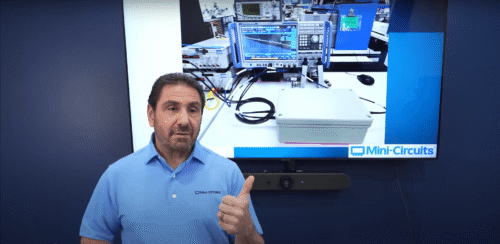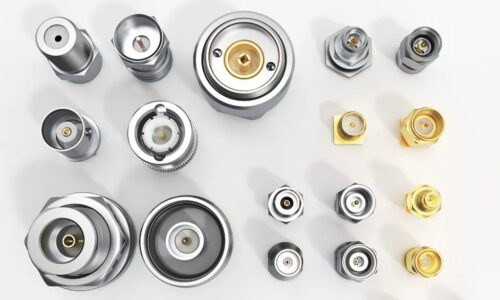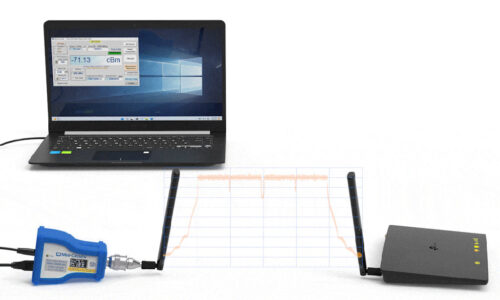Mini-Circuits Bridging the Gap Between the Classroom and the Lab
With a history that dates back 50 years, Mini-Circuits is one of the most recognizable names in the RF/microwave industry. Known as a supplier of high-frequency components, Mini-Circuits offers an enormous number of products, which includes the likes of amplifiers, filters, mixers, and couplers, just to name a select few.
However, in 2018, Mini-Circuits made news by unveiling a product unlike anything the company had previously offered. Dubbed the UVNA-63, it’s a vector-network-analyzer (VNA) kit intended for the academic community (Fig. 1). Mini-Circuits describes it as a research and educational tool—a do-it-yourself (DIY) kit that contains everything engineering students need to build a fully functional VNA. In Mini-Circuits’ own words, the UVNA-63 “bridges the gap between textbook theory in the classroom and practical, real-world measurements in the lab.” Mini-Circuits partnered with Vayyar to develop the VNA kit.
What’s Included
So, what does the UVNA-63 kit consist of? Foremost is the transceiver board, which houses the transceiver system-on-chip (SoC) developed by Vayyar. The transceiver board has multiple ports, providing the transmit and receive functionality needed to create a VNA. The board connects to a PC via a USB cable.
The UVNA-63 kit also features four Mini-Circuits couplers: two ZHDC-16-63-S+ 16-dB couplers and two ZHDC-10-63-S+ 10-dB couplers. Also included are several of Mini-Circuits’ cables to connect everything together. The UVNA-63 kit comes unassembled out of the box, meaning that students must put the VNA together on their own. Mini-Circuits offers an assembly manual that students can use as a guide when assembling the kit. After assembly, one then has a fully functional VNA with an operating frequency range of 100 MHz to 6 GHz.
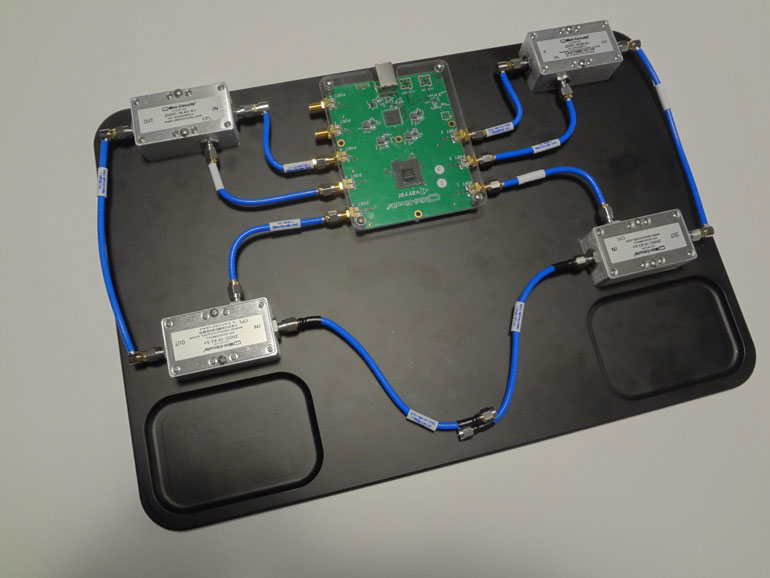
A VNA is a sophisticated test instrument, but it doesn’t have much use if there’s nothing to test. Hence, the UVNA-63 kit provides several devices under test (DUTs). The DUTs, which are all Mini-Circuits products, include a VBF-2435+ bandpass filter and a VLF-1500+ lowpass filter (Fig. 2).
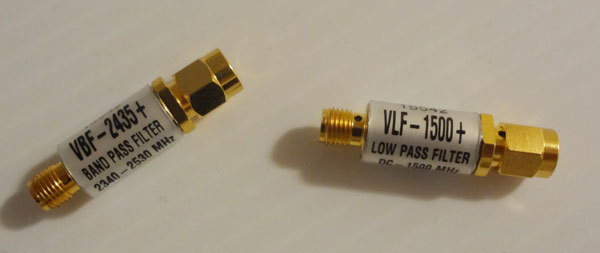
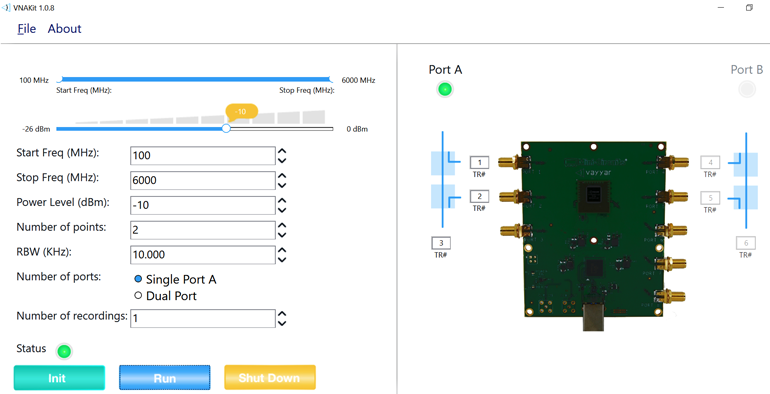
Also in the mix are a 3-dB attenuator, 6-dB attenuator, 15-dB attenuator, and 50-Ω termination. One active DUT is included: the TB-410-84+ evaluation board, which houses the GVA-84+ amplifier.
Since calibration is an essential aspect of a VNA, the UVNA-63 kit also has a complete calibration kit that includes open, short, load, and thru standards—all of which are built with SMA female connectors. The topic of calibration is explored much deeper in two UVNA-63 application notes published by Mini-Circuits. The first application note, “Error Correction,” explains the sources of systematic error in a network analyzer. The document goes on to discuss vector error correction (VEC) before explaining the 12-term error model and more.
The “Error Correction” application note is intended to serve as a prerequisite to the second application note titled, “Calibration Standards and the SOLT Method.”
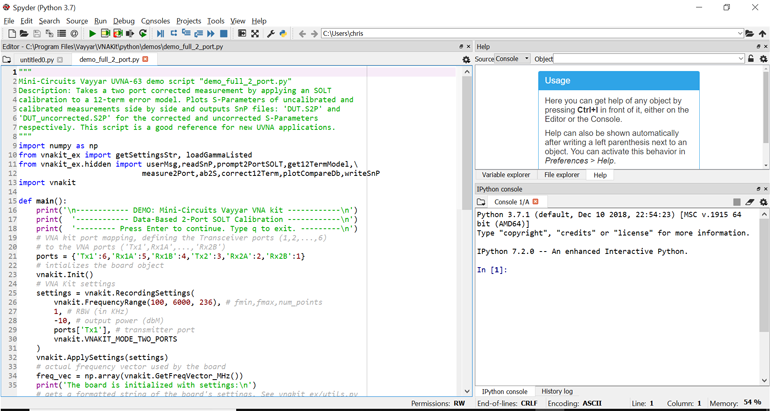
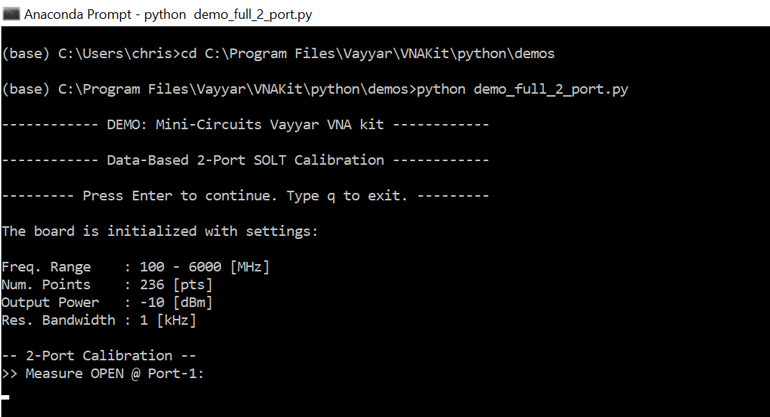
In this document, Mini-Circuits defines a calibration method: Specifically, it’s a procedure in which a set of standardized components (a calibration kit) is measured and then used to construct an error-correction model. The app note goes on to explain the calibration standards in more detail before discussing both data- and model-based standards.
Students are encouraged to read both application notes to gain a better understanding of the concepts behind a VNA. The documents also reveal corresponding functions that students can use to program the UVNA-63 VNA kit.
The UVNA-63 in Action
It’s now time to put the UVNA-63 VNA kit to work. A software program can be downloaded from Mini-Circuits’ website, providing students with a graphical user interface (GUI) they can use to control the transceiver (Fig. 3). The GUI lets users set the frequency range, transmitter power level, and more.
With the GUI, one can select between two settings: Single Port A and Dual Port. Selecting Single Port A sets Port 3 of the transceiver board as the transmitting port, while Port 1 and Port 2 are both set to be receiving ports. All other ports are inactive. Selecting Run will record the data from the ports and save it to a file, which can be specified as either a CSV or MAT file.
The data for each port is presented in terms of I/Q components. For the Single Port A setting, Port 3 data is zero at all frequencies, since this port is the transmitting port. The data for all inactive ports is also zero at all frequencies.
With the Dual Port setting, one port is transmitting, while all other ports are receiving. Hence, the data file generated when running the program with this setting is zero at all frequencies for the transmitting port. For all other (receiving) ports, the data file contains the measured values.
Of course, Mini-Circuits could have provided a GUI that includes all of the functionality needed to operate a VNA. However, that would defeat the purpose of the UVNA-63 VNA kit, which, again, is to “bridge the gap between textbook theory in the classroom and practical, real-world measurements in the lab.” Therefore, instead of just simply operating the VNA with a few clicks of a mouse, students must develop their own real-time S-parameter algorithms with either Python or MATLAB. Mini-Circuits provides the documentation needed to program the UVNA-63.
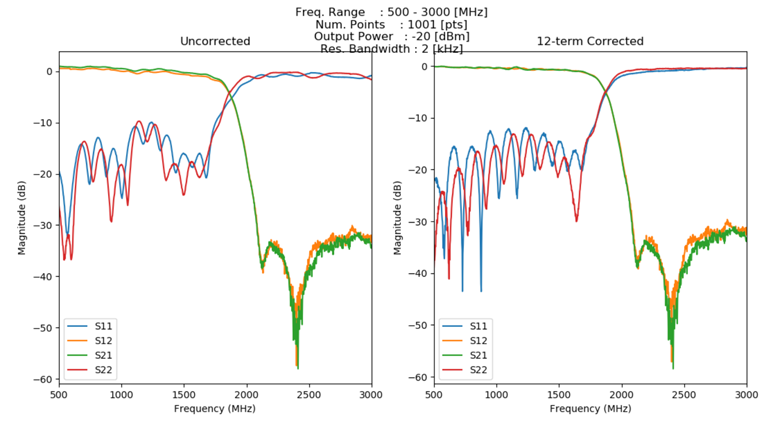
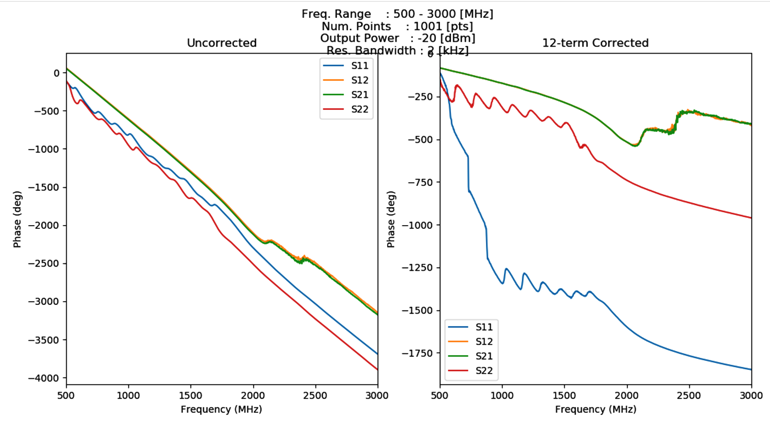
The company does offer some example code to help students get started. For example, the demo_full_2_port Python script is a good place to begin (Fig. 4). Executing this script will first configure the VNA settings, which includes a frequency range of 100 MHz to 6 GHz along with 236 measurement points.
Users are then prompted to perform a two-port calibration to allow for the construction of a 12-term error model (Fig. 5). The script subsequently prompts users to measure the DUT. After the DUT is measured, two touchstone files that contain the measurement data are saved to a directory. One of the touchstone files contains the uncorrected S-parameters, while the other reveals the corrected S-parameters.
In addition to the touchstone files, uncorrected and corrected measurements are plotted side by side. Figure 6 shows the plots generated when measuring the VLF-1500+ lowpass filter with a modified version of the demo_full_2_port Python script. In this case, the default settings for the frequency range, number of points, output power, and resolution bandwidth have all been changed. Note that the uncorrected plots reveal a fictitious insertion loss of greater than 0 dB throughout the passband.
Students can modify the demo_full_2_port script to create their own customized version, too. As a very simple example, phase measurements can be performed by making the appropriate code modifications. Figure 7 shows plots of uncorrected and corrected phase measurements of the VLF-1500+ lowpass filter that were executed by simply modifying the demo_full_2_port script.
In addition to the demo_full_2_port script, Mini-Circuits provides other Python examples, such as the demo_deembed script and more. Furthermore, students can program the UVNA-63 with MATLAB as opposed to Python.
Conclusion
The UVNA-63 kit is certainly a creative idea that should be a great benefit to engineering students everywhere. Rather than simply pressing one button to perform VNA measurements without really thinking about how a VNA operates, the kit gives students the opportunity to build a VNA themselves and bridge the gap between textbook theory and real-world measurements. Let’s hope the UVNA-63 kit is one tool that helps better equip the next generation of engineers.
Related articles
https://www.mwrf.com/test-measurement/get-your-hands-dirty-these-vna-tools
https://www.mwrf.com/test-measurement/brushing-network-analyzer-fundamentals
https://www.mwrf.com/test-measurement/familiarize-yourself-latest-vector-network-analysis
https://www.mwrf.com/test-measurement/see-how-new-vna-stacks


